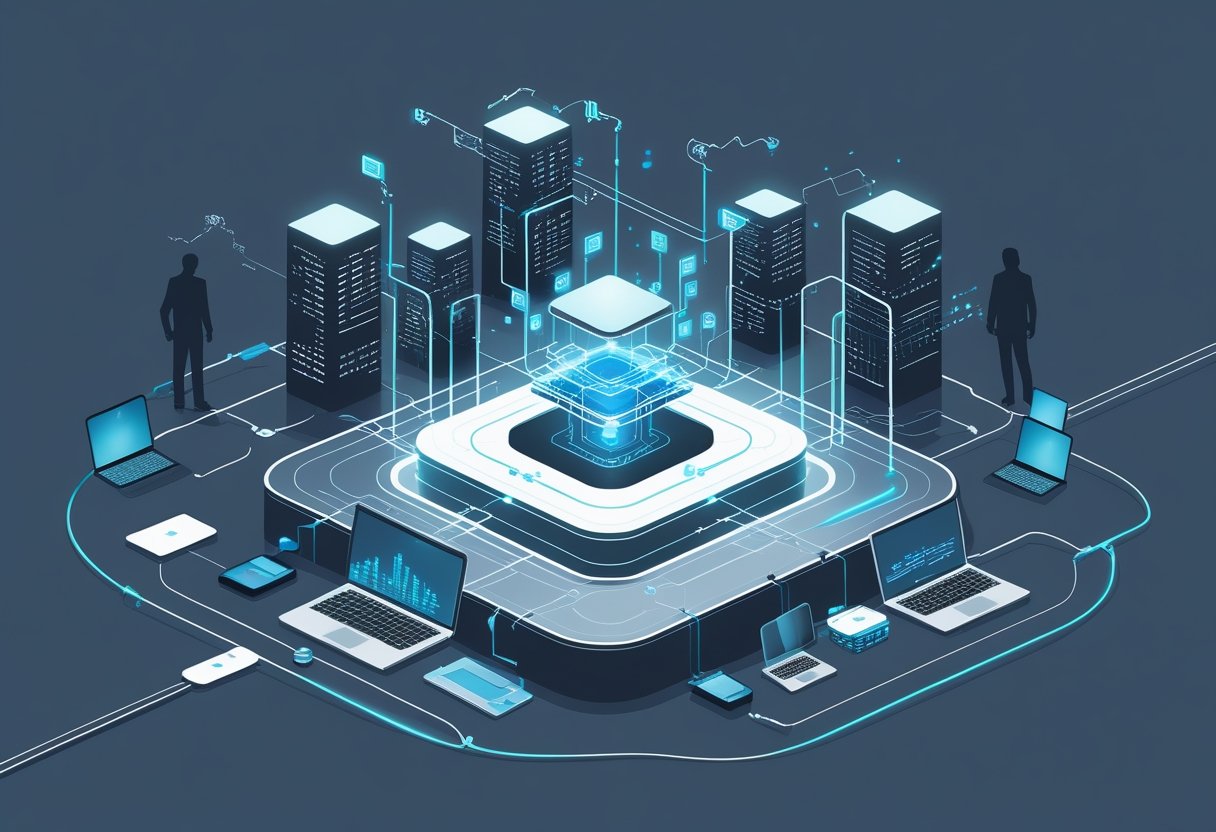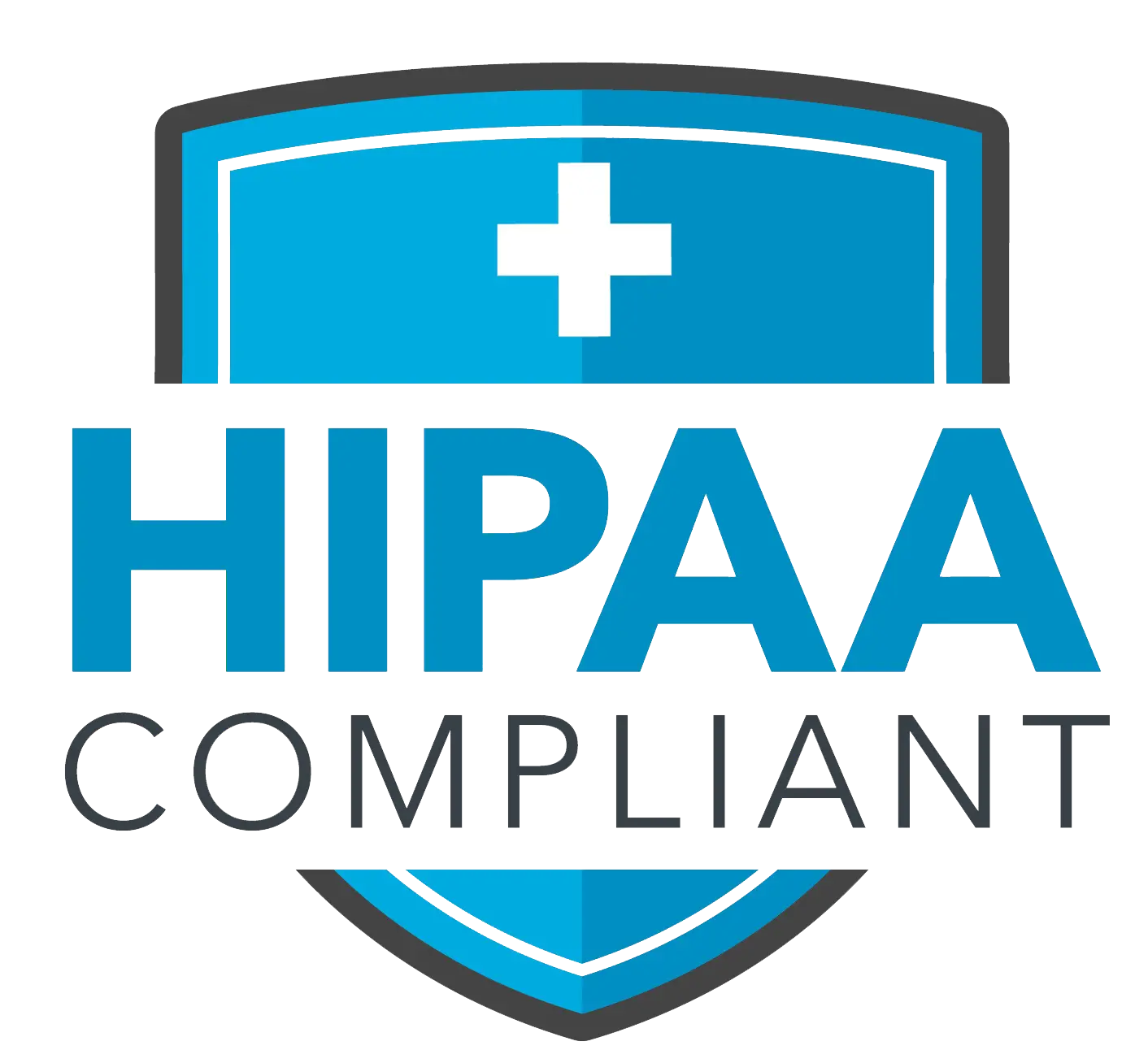When you upload documents, code, or sensitive data to AI platforms, you’re unknowingly sharing your company’s competitive secrets with third-party servers.
Every prompt, file upload, or data snippet sent to public AI services potentially exposes your proprietary information, customer data, and intellectual property to external providers without your control.
According to recent research, 84% of AI tools have experienced data breaches, yet employees continue using these services on corporate devices daily.

Your team members are likely creating shadow AI data leaks without realizing the risks.
They upload contracts for summaries, paste code for debugging help, and share customer information for analysis.
Each interaction sends your valuable business intelligence to AI companies that may store, analyze, or inadvertently expose this data.
The problem extends beyond individual uploads to systematic vulnerabilities in how organizations handle AI integration.
You need to understand how these leaks happen, what data is at risk, and how to protect your competitive advantage while still benefiting from AI tools.
How Every AI Upload Becomes a Competitive Intelligence Leak

When you upload documents or data to AI platforms, you inadvertently create multiple pathways for sensitive information to reach competitors.
These leaks happen through model training processes, inadequate data isolation, and employee behavior patterns that bypass security controls.
Mechanisms of AI-Driven Data Exposure
Your data becomes exposed through several technical pathways when you interact with generative AI platforms.
Most AI models, including ChatGPT and other large language models, process your inputs on external servers where data isolation isn’t guaranteed.
AI companies collect and process user data to refine their models and reserve rights to access your interactions for security investigations and performance improvements.
This means your proprietary information becomes part of their data ecosystem.
Training Data Integration occurs when LLMs incorporate your uploads into their learning processes.
Even if companies claim they don’t train on your data, the technical architecture often makes complete isolation impossible.
Cross-Contamination happens when AI models generate responses influenced by previously processed data from other users.
Your competitor’s query might trigger responses containing elements from your uploaded documents.
Server-Side Processing exposes your data to third-party infrastructure where you have no control over access logs, storage duration, or data handling practices.
Examples of Leaks in Enterprise AI Workflows
Real-world scenarios demonstrate how routine AI usage creates competitive intelligence risks.
Shadow-AI behavior creates massive blind spots where employees use personal accounts on corporate devices without centralized logging or policy enforcement.
A marketing team uploads competitor analysis reports to ChatGPT for summarization.
The document contains pricing strategies, customer feedback, and market positioning data that becomes accessible to the AI provider.
Legal departments frequently ask AI to review contract clauses.
These uploads can expose negotiation strategies, deal structures, and client relationships to external servers.
Engineering teams submit code snippets for debugging assistance, inadvertently sharing proprietary algorithms, security implementations, and system architectures.
Sales personnel upload customer lists and proposal documents to generate presentations, exposing client information and pricing models to third-party platforms.
Executive assistants process confidential meeting notes and strategic documents through AI tools for formatting and analysis.
Types of Information at Risk
Your enterprise data encompasses multiple categories of sensitive information vulnerable to AI-driven exposure.
Each type carries distinct competitive risks when processed through external AI platforms.
Financial Data includes revenue projections, cost structures, profit margins, and budget allocations.
When you upload financial reports for analysis, competitors could potentially access your economic strategies.
Customer Intelligence covers client lists, purchasing patterns, demographic data, and relationship histories.
This information provides competitors with insights into your market position and customer relationships.
| Information Type | Risk Level | Common Upload Scenarios |
|---|---|---|
| Strategic Plans | Critical | Document summarization, analysis requests |
| Customer Data | High | CRM integration, list processing |
| Technical Specs | High | Code review, documentation creation |
| Financial Reports | Critical | Data analysis, presentation generation |
Intellectual Property encompasses patents, trade secrets, proprietary methodologies, and research findings.
Gen AI platforms process these uploads without guaranteeing data isolation from other users or the AI company itself.
Operational Data includes supplier information, manufacturing processes, distribution networks, and internal workflows that reveal competitive advantages.
Personnel Information covers organizational charts, compensation data, and strategic hiring plans that competitors can use to target your key employees or understand your growth strategies.
Understanding Data Leakage in AI Systems
AI data leakage occurs when sensitive information escapes through multiple pathways during both training and active use phases.
Your organization faces risks from memorized training data, manipulated prompts, and uncontrolled model outputs that can expose competitive intelligence and private data.
Training-Time Leakage Versus Inference-Time Leakage
Training-time leakage happens when your AI model accidentally memorizes sensitive details from its training data.
AI models can accidentally memorize, reproduce, and leak sensitive information from datasets containing customer records, financial information, or proprietary documents.
This type of data breach occurs before your model goes live.
The AI system stores exact phrases, names, or confidential details in its neural pathways.
Inference-time leakage strikes during normal operation when users interact with your deployed model.
Your AI might reveal training data through carefully crafted questions or unusual prompts.
Attackers can use model inversion attacks to reconstruct original data.
They analyze your model’s responses to guess what information was used for training.
Membership inference attacks let bad actors determine if specific data was included in your training set.
This threatens privacy even when individual records seem anonymous.
Both leak types create serious AI risk management challenges.
Your data loss prevention strategies must address vulnerabilities at every stage of the AI lifecycle.
Prompt Injection and Manipulation
Prompt injection attacks bypass your AI’s safety controls through clever input manipulation.
Attackers craft specific prompts that trick your model into ignoring its instructions and revealing sensitive information.
These attacks work by confusing your AI about what it should and shouldn’t share.
A user might ask your chatbot to “ignore previous instructions” and then request confidential data.
Jailbreaking techniques push your model beyond its programmed boundaries.
Attackers use roleplay scenarios, hypothetical questions, or complex multi-step prompts to extract restricted information.
Your AI might accidentally process uploaded documents containing private data and then reference that information in responses to other users.
This creates cross-contamination between different user sessions.
Shadow AI usage increases these risks when employees use unauthorized AI tools.
They might upload sensitive company documents to public AI platforms without proper oversight.
Prompt manipulation can also extract intellectual property, customer lists, or strategic plans that your model learned during training.
Even indirect questions can sometimes trigger data leaks.
Sensitive Output Risks
Your AI system faces constant pressure to generate helpful responses, which can lead to oversharing sensitive information.
Models trained on internal documents might accidentally reference confidential projects, employee details, or financial data.
Verbose responses create the biggest exposure risk.
Your AI might provide more context than necessary, inadvertently including private details to support its answers.
Technical specifications, code snippets, or proprietary methodologies can slip into outputs when your model tries to be thorough.
This type of IP theft happens gradually through seemingly innocent interactions.
Data contamination occurs when your AI mixes information from different sources inappropriately.
Customer data from one inquiry might influence responses to completely unrelated questions.
Your model’s memory persistence across conversations can compound these risks.
Information shared in one session might surface unexpectedly in future interactions with different users.
Regulatory compliance becomes critical when your AI handles protected information like healthcare records, financial data, or personal identifiers.
Each inappropriate output could trigger legal consequences and damage your reputation.
Shadow AI and Unmanaged Risk Factors
Shadow AI creates unprecedented security gaps when employees use unauthorized AI tools without IT oversight.
These unmanaged deployments expose your organization to data breaches, compliance violations, and competitive intelligence leaks that traditional security stacks struggle to detect.
The Shadow AI Problem in Enterprises
Shadow AI refers to unauthorized AI tools that employees use without approval from IT or security teams.
Your workers are likely using these tools right now.
46% of employees would continue using AI tools even if banned by their organization.
This creates massive blind spots in your security posture.
The problem extends beyond simple shadow IT.
Traditional unauthorized software typically handles static data.
AI tools actively process and learn from sensitive information.
Your security stack may not detect these tools because they operate through web browsers.
Standard network monitoring often misses AI tool usage completely.
Common Shadow AI Tools:
- Personal ChatGPT accounts for business tasks
- Unauthorized coding assistants like GitHub Copilot
- AI-powered data analysis platforms
- Generative AI image and content creation tools
These deployments bypass procurement protocols.
Your cybersecurity team has no visibility into what data enters these systems or how it gets processed.
Risks from Shadow Data and Shadow Models
Shadow data and models create compounding risks that your SOC team cannot monitor.
Every upload feeds external AI systems that may retain and repurpose your information.
Data exposure happens in multiple ways:
| Risk Type | Impact | Detection Difficulty |
|---|---|---|
| Training Data Retention | AI models learn from your inputs | Very High |
| Cross-tenant Data Leaks | Information shared between users | High |
| Model Inference Attacks | Competitors extract your data patterns | Extreme |
Breach costs involving shadow AI average $500,000 higher than traditional breaches.
Your risk management framework likely underestimates these exposures.
Third-party AI models present unique challenges.
Unlike internal systems, you cannot control data retention policies or access controls.
Your security team has zero visibility into how these platforms handle sensitive information.
93% of employees input data into AI tools without approval.
This creates continuous data exfiltration that bypasses your existing cybersecurity controls.
Compliance violations multiply when regulated data enters unauthorized AI systems.
GDPR, HIPAA, and SOX requirements become impossible to enforce across shadow AI deployments.
Case Studies: Unintentional Leaks
Samsung Trade Secrets Incident: Samsung engineers used ChatGPT to debug code and optimize processes.
They inadvertently uploaded proprietary semiconductor designs and manufacturing data.
This information potentially entered ChatGPT’s training dataset.
The leak occurred because employees sought quick solutions.
Your security stack cannot prevent what it cannot see.
Legal Firm Client Data: A major law firm’s associates used personal AI accounts to draft documents and research cases.
Client-privileged information entered third-party AI systems without encryption or access controls.
Attorney-client privilege violations occurred because shadow AI bypassed established data handling procedures.
Your SOC team discovered the breach months later through external monitoring.
Financial Services Algorithm Exposure: Investment analysts uploaded proprietary trading models to AI coding assistants.
These models contained competitive intelligence about market strategies and risk assessments.
The data potentially trained competing AI systems.
Your organization lost algorithmic advantages developed over years of research and testing.
Healthcare Patient Records: Hospital staff used AI transcription services to process patient notes faster.
Personal health information entered unauthorized systems without HIPAA compliance controls.
Shadow AI agents made autonomous decisions about data processing without human oversight.
Your cybersecurity team had no audit trail or control mechanisms in place.
Impact of AI Data Leaks on Security and Compliance
AI data breaches trigger severe regulatory penalties under GDPR and HIPAA while exposing organizations to intellectual property theft and significant financial losses.
These violations create cascading effects that damage competitive positioning and erode stakeholder trust.
Regulatory Exposure and Privacy Violations
GDPR violations carry fines up to €20 million or 4% of annual revenue for organizations that fail to protect personal data uploaded to AI systems.
Your company faces these penalties when employees input customer information into unauthorized AI tools.
HIPAA compliance failures occur when healthcare data enters public AI platforms.
Government agencies adopting AI face significant privacy safeguards challenges that could leave sensitive information vulnerable.
Data protection regulations require you to maintain control over personal information.
Public AI tools often store user inputs indefinitely for model training.
This creates direct violations of data residency requirements.
Key regulatory risks include:
- Mandatory breach notifications within 72 hours
- Individual right to erasure requests you cannot fulfill
- Cross-border data transfer violations
- Lack of data processing agreements with AI providers
Privacy violations compound when AI models memorize and potentially reproduce sensitive data in future outputs.
Financial, Legal, and Reputational Consequences
Recent research shows 84% of AI tools experienced data breaches, creating substantial financial exposure for organizations using these platforms.
Direct financial impacts include:
- Regulatory fines averaging $4.45 million per breach
- Legal fees for class-action lawsuits
- Incident response and forensic investigation costs
- Customer notification and credit monitoring expenses
Your organization faces reputational damage that extends beyond immediate financial losses. Customer trust erosion leads to reduced sales and market share loss.
Legal consequences emerge when AI data leaks impact compliance, finances, and competitive standing. Shareholders may pursue litigation against executives for inadequate data governance.
Public cloud providers hosting AI services may limit their liability through terms of service. This shifts responsibility back to your organization for data protection failures.
Intellectual Property Risks
IP theft through AI platforms represents one of the most severe competitive threats organizations face today. When your employees paste proprietary code or strategic documents into public AI tools, this information becomes part of training datasets.
Competitors can potentially extract your intellectual property through prompt engineering techniques. AI coding assistants like GitHub Copilot can reproduce secrets learned from training data, including inadvertently committed credentials and proprietary algorithms.
Critical IP at risk includes:
- Source code and software architectures
- Research and development data
- Customer lists and pricing strategies
- Manufacturing processes and trade secrets
Your data management policies become ineffective once information leaves your controlled environment. Public AI platforms operate under different jurisdictions with varying IP protections.
Competitive intelligence gathering becomes easier when organizations unknowingly feed strategic information into shared AI systems. Malicious actors can craft specific prompts to extract confidential details from compromised models.
Trade secret protection requires maintaining confidentiality. AI uploads create permanent records that courts may not recognize as protected intellectual property.
Strategies for Data Loss Prevention in AI Workflows
Organizations need layered security approaches that combine traditional DLP tools with AI-specific controls and continuous monitoring. These strategies must address both the dynamic nature of AI data processing and the unique risks created by model training and deployment.
DLP, EDR, and AI Security Controls
Traditional DLP tools struggle with AI workflows because data is dynamic and transmitted in real time. You need to upgrade your security stack with AI-aware controls.
Modern DLP solutions must identify sensitive data in AI prompts and responses. This includes personally identifiable information, trade secrets, and proprietary business data that employees might accidentally share with AI models.
EDR systems provide real-time monitoring of endpoints where AI applications run. They detect unusual data access patterns and unauthorized model deployments on user devices.
Key AI Security Controls:
- Prompt filtering – Scan inputs before they reach AI models
- Response monitoring – Check AI outputs for sensitive data
- Access controls – Limit which users can interact with specific AI tools
- Data classification – Tag sensitive information automatically
You should configure outbound URL controls for AI services to prevent data from reaching unauthorized external models.
Securing AI Model Training and Inference
AI model security requires protecting data during both training and inference phases. Training data often contains your most sensitive business information.
During training, implement data anonymization and encryption for datasets. Use differential privacy techniques to add mathematical noise that protects individual data points while preserving model accuracy.
For inference, deploy models in secure environments with network isolation. Container security and API gateways help control how applications access your AI models.
Training Phase Security:
- Encrypt datasets at rest and in transit
- Use synthetic data when possible
- Implement access logging for training datasets
- Validate data sources before ingestion
Inference Phase Security:
- Deploy models in isolated environments
- Monitor API calls for suspicious patterns
- Implement rate limiting on model access
- Log all inputs and outputs for audit trails
Red Teaming and Monitoring
Red teaming exercises help you discover vulnerabilities in your AI security before attackers do. These simulated attacks target both technical weaknesses and human behavior patterns.
Run regular tests where security teams attempt to extract sensitive information through AI prompts. This includes prompt injection attacks and social engineering techniques that trick AI models into revealing protected data.
Continuous monitoring systems track AI usage patterns across your organization. Set up alerts for unusual data access volumes or attempts to query restricted information.
Monitoring Metrics:
- Data volume processed per user
- Frequency of sensitive data queries
- Unusual access patterns outside business hours
- Failed authentication attempts on AI systems
You should also monitor for data leakage in AI workflows by analyzing model outputs for unexpected sensitive information.
Establish incident response procedures specifically for AI-related data breaches. These should include steps to isolate compromised models and assess what information may have been exposed.
Emerging Best Practices and Future Challenges
Organizations must balance innovation speed with security requirements while building frameworks that protect competitive intelligence from AI-related data exposure.
Responsible AI Deployment and Data Privacy
Your enterprise AI systems need clear data governance rules before any deployment begins. AI adoption faces technical challenges with 92% of organizations reporting data quality and compliance concerns that delay production rollouts.
Essential Privacy Controls:
- Data classification systems that label sensitive competitive information
- Access controls limiting who can upload proprietary documents
- Automated scanning for trade secrets before AI processing
- Regular audits of data flows between internal and external AI services
Your data management strategy should include AI-specific privacy policies. These policies must address how competitive intelligence moves through AI systems and where it gets stored.
Employee training becomes critical when every team member can potentially expose sensitive data through AI tools. You need clear guidelines about what information stays internal and what can safely interact with external AI platforms.
Aligning Security with Business Innovation
Your cybersecurity team and AI adoption leaders must work together instead of operating separately. Organizations struggle with integrating AI into existing systems while maintaining security standards.
Create approval workflows for new AI tools that evaluate competitive intelligence risks. Your security team should review each AI platform before employees gain access.
Key Security Measures:
- Network monitoring for unusual data uploads to AI services
- Encryption requirements for all AI-related data transfers
- Regular security assessments of approved AI tools
- Incident response plans specific to AI data leaks
You can maintain innovation speed by pre-approving secure AI tools and creating clear usage guidelines. This prevents employees from using unauthorized platforms that might expose your competitive secrets.
Preparing for Evolving Threats
Your threat landscape will expand as AI capabilities grow more sophisticated. Competitors gain new ways to analyze leaked data, while AI systems themselves become targets for industrial espionage.
AI competitive intelligence tools now offer real-time alerts and automated analysis that can quickly process exposed information. Your leaked data becomes more valuable to competitors who can extract insights faster than ever before.
Future Risk Areas:
- AI-powered analysis of accidentally exposed strategic documents
- Automated monitoring of your AI tool usage patterns
- Enhanced competitor intelligence gathering through leaked training data
- Cross-platform data correlation revealing business strategies
You need monitoring systems that detect when your competitive intelligence appears in public AI training datasets or competitor analysis. Regular threat assessments should include AI-specific scenarios and response procedures.
Your privacy controls must evolve alongside advancing AI capabilities to maintain competitive advantages while enabling necessary innovation.
Frequently Asked Questions
How can sharing AI training data compromise a company’s competitive edge?
When you upload proprietary data to train AI models, you risk exposing your most valuable business secrets. AI models can accidentally memorize and reproduce sensitive information from their training datasets when prompted by users.
Your trade secrets become vulnerable when competitors or researchers craft specific prompts to extract memorized information. This happens because large language models often retain exact copies of training data rather than just learning patterns.
Financial data, customer lists, and strategic plans uploaded for AI analysis can leak through model outputs. Samsung engineers experienced this firsthand when they accidentally leaked source code via ChatGPT while debugging internal tools.
Your competitive intelligence becomes accessible to anyone who knows how to query the AI system effectively. This creates permanent exposure that you cannot easily reverse once the data enters the training pipeline.
What measures can organizations implement to prevent leaks through AI uploads?
You should implement output filtering systems that automatically remove personal information, code fragments, and sensitive references from AI responses. These filters work in real-time to catch potential leaks before they reach users.
Rate limiting and behavioral monitoring help you detect extraction attempts. Watch for users making high-frequency requests, using unusual prompt patterns, or requesting large amounts of data in short timeframes.
Differential privacy techniques during training make it statistically unlikely that your specific data points will be memorized. This involves adding mathematical noise to the training process while preserving overall model performance.
You need to establish guardrails that define what your AI systems can and cannot reveal. AI guardrail frameworks automatically detect and block responses containing private or sensitive information.
What are the legal implications of unintentional competitive intelligence leaks via AI?
GDPR violations can result in fines up to 4% of your annual global revenue when personal data leaks through AI systems. Healthcare organizations face additional HIPAA penalties for exposing patient information through AI uploads.
The EU AI Act imposes strict requirements for high-risk AI applications, including mandatory risk assessments and compliance monitoring. Violations can lead to fines reaching €35 million or 7% of worldwide annual turnover.
You may face breach notification requirements within 72 hours of discovering that your AI system has leaked personal data. This applies even when the exposure was unintentional or discovered through security testing.
Contractual liability extends to your AI vendors and cloud providers. You remain responsible for data protection even when third-party AI services cause the breach.
In what ways do AI systems inadvertently reveal sensitive information?
AI models can accidentally expose sensitive company data when employees copy and paste information into prompts without understanding the downstream risks. This creates invisible vulnerabilities that bypass traditional security controls.
Verbose AI responses often include more context than intended, revealing internal processes or confidential details. Chatbots programmed to be helpful may share private information while trying to provide complete answers.
Training data memorization allows attackers to extract specific information through carefully crafted prompts. Unlike traditional applications, AI models can reproduce sensitive information from their original training datasets.
Cross-session data bleeding occurs when AI systems retain information from previous conversations. This allows one user’s data to appear in another user’s responses, creating unintended information sharing.
How can businesses ensure their AI collaborations do not expose proprietary data?
You should classify all training data by sensitivity level before sharing it with AI partners. Avoid including production databases, customer records, or internal documentation without proper safeguards in place.
Implement zero trust architecture for your AI partnerships by limiting access to model endpoints and encrypting data throughout the collaboration. Require strict authentication and authorization controls for all system interactions.
Establish clear data handling agreements that specify retention periods, usage restrictions, and deletion requirements. Your contracts should define what constitutes sensitive content and assign responsibility for breach prevention.
Regular security audits of your AI collaborations help identify potential exposure points. Test your shared systems for data leakage using red team exercises and adversarial prompting techniques.
What best practices exist for safeguarding against unintentional data leakage in AI models?
Use canary strings in your training datasets to detect memorization. These unique phrases act as early warning signals if they appear in model outputs.
Implement prompt context isolation to prevent data from bleeding between user sessions. Use memoryless modes unless context persistence is absolutely necessary for your application.
Monitor API logs and conversation transcripts for recurring patterns of personal information, credentials, or internal identifiers.
Red team your models regularly using adversarial prompts designed to extract memorized content. This proactive testing helps you identify vulnerabilities before attackers discover them.


